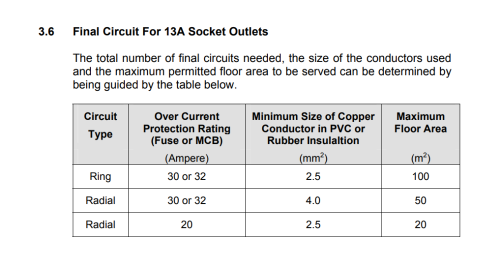QUOTE(YoungMan @ Nov 11 2024, 07:25 PM)
So if developer/contractor uses mostly 32 A, it is fine as long not more than 6 13A socket and not for high load/kitchen use? Anything else that need to take into consideration for right sizing MCB?
Note that the 6 sockets are in ring configuration. Just in case you are not sure what it means. The ring wiring is when wires come out from DB and go to sockets in series and return back to DB through another path to form a circle. Therefore, if you cut wire to one of the socket, power will still be available on the rest of sockets. My house wiring is like this. There are two separate rings for ground and upper floors. I have 2x32A MCB in my DB.Just think you MCB is more on protecting wire in wall. If current is too high, the MCB will trip to protect wire in the wall from getting to hot and melt the insulator, short-circuited and ignite fire. The MCB rating is not rated to provide total power to sockets on the wall. As you can see the 20A MCB is used for 2x13A socket. Two sockets totaled up for 26A but the MCB is only 20A.
Current carrying capability of wire depends not only on its size but ambient temperature and how it is laid also affect current rating. I always assume the 4mm wire should be protected by 20A MCB even though it can carry much more current. If in thermally isolated trunking in will be rated at 24A but if laid directly on concrete wall it can go up to 32A. However, you have other wires put together.This will affect ambient temperature as well.
Hope this helps.


 Nov 12 2024, 08:43 AM
Nov 12 2024, 08:43 AM

 Quote
Quote


 0.0261sec
0.0261sec
 0.32
0.32
 6 queries
6 queries
 GZIP Disabled
GZIP Disabled